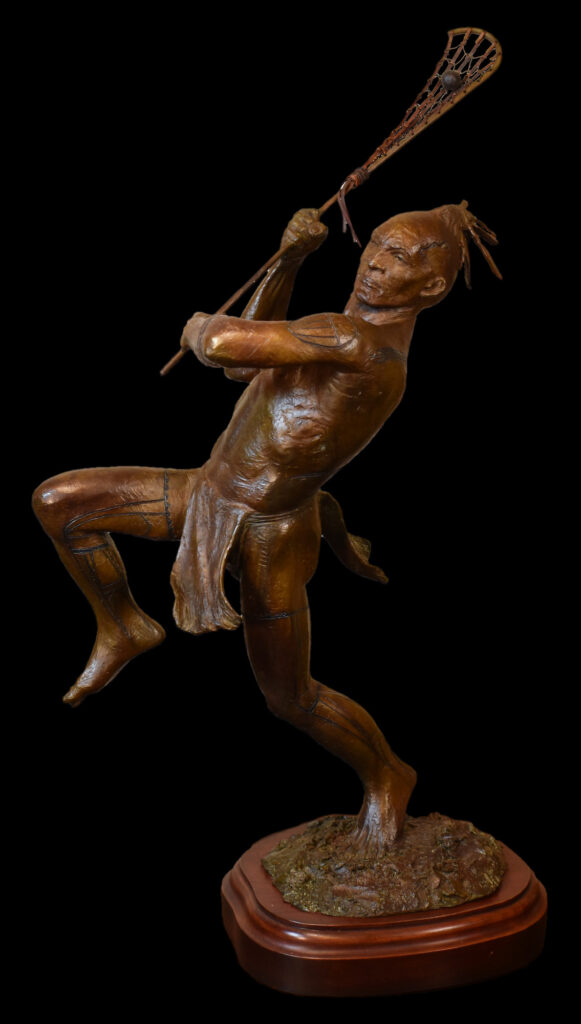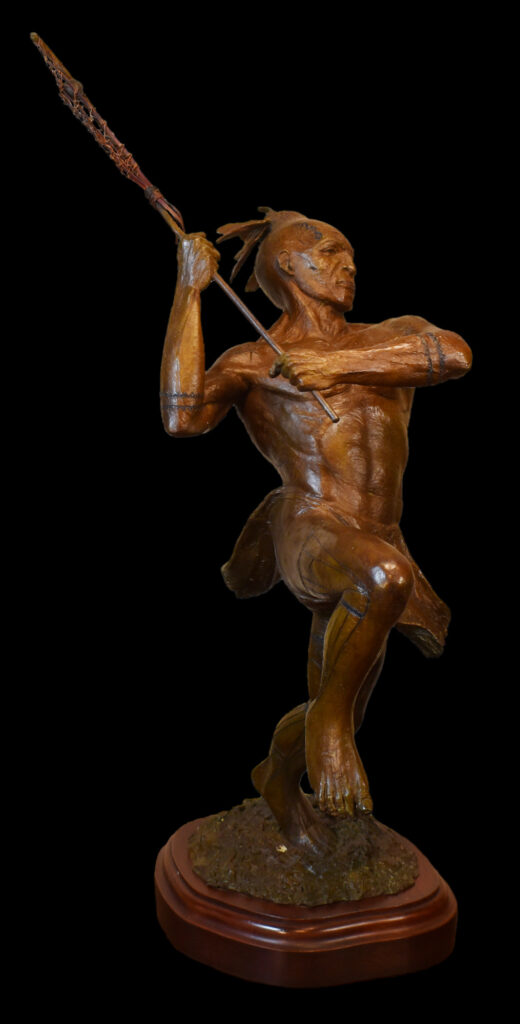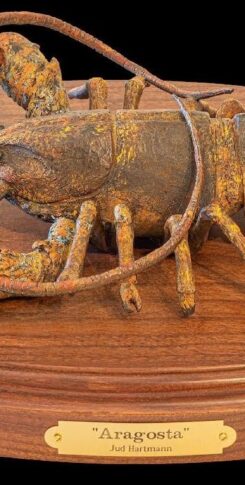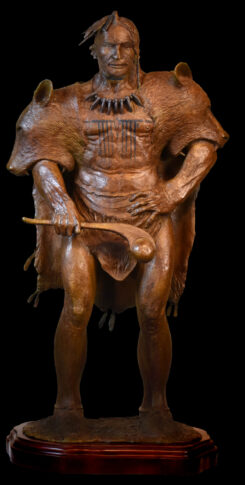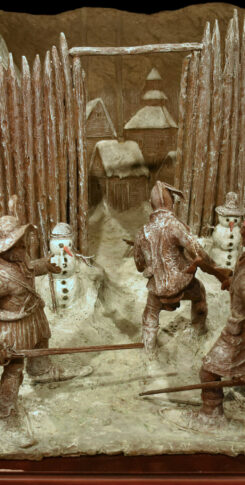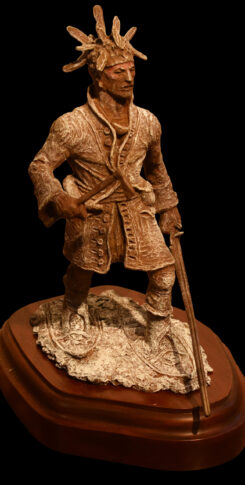2017 | Bronze edition: 35 | Height: 24″
“The tall, erect posture and the elastic tread of the Indian…is attributable to physical training. The consequence is… the Indian indulges in those sports which expand the chest and throw back the shoulders and impart agility and grace to the movement of the limbs. In addition to their athletic exercises of running, wrestling and leaping was the game of lacrosse. Indeed, so much attached were they to this manly exercise, that the game had become national throughout the Iroquois Confederacy; and it was no uncommon thing for one nation to challenge another to play a match upon a much larger scale, beyond doubt, than was ever to be practiced among the pale-faces.”
This last “great” Iroquois lacrosse game was played in 1797 between two of the Iroquois tribes, the Mohawk and the Seneca on “a broad and beautiful green of perhaps 100 acres…the combatants numbered about 600 on a side, young and middle age men, nimble of foot, athletic and muscular…the game was commenced by 60 players on a side…the match was played with great spirit and the display of agility and muscular strength was surprising. Every nerve was strung and so great were the exertions of the players, that each set of 60 players was relieved every 15 or 20 minutes; thus alternating and allowing every player of the whole number to perform his part until the game was finished. The scene was full of excitement and animation.”
Before the game commenced, the head matriarchs from each nation had the young men carry onto the field all the material goods that were to be wagered on the match. These were displayed for all to see around the stakes driven into the ground at either end of the field which were to serve as the goalposts. This was then what was “at stake.”
With a mighty arching of his tall and muscular frame the Seneca captain , at the end of the third day of competition, is about to score the winning goal and secure the victory. As eyewitness Samuel Woodruff, a judge from Windsor, Connecticut and guest of the principal Mohawk chief Joseph Brant, observed in his journal: “After a severe struggle, the Seneca were declared the victors”…and to the victors belong the spoils.
Excerpts from: “ The Life of Joseph Brant – Thyendanegea”
in two volumes by William L. Stone, 1838”

